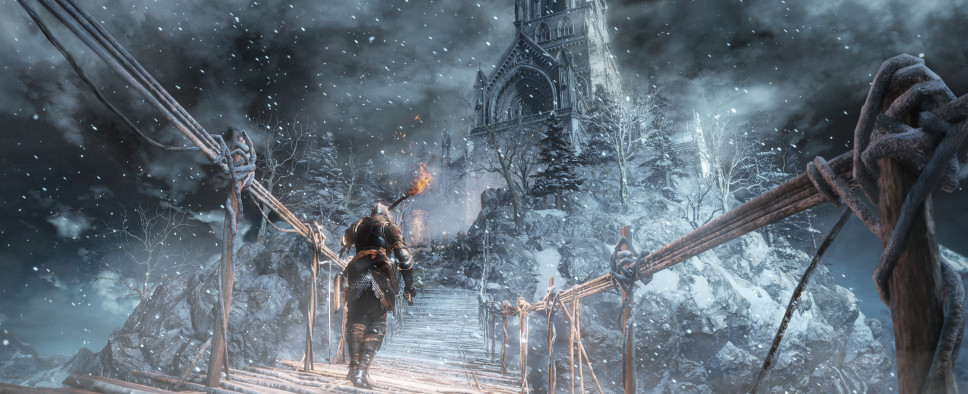GB Feature: Dark Souls III + Ashes of Ariandel DLC Review
-
Category: News ArchiveHits: 1651

From Software's Dark Souls III and its first set of DLC, Ashes of Ariandel, are the subject of a combined six-page review that our own WUE penned after sinking a substantial amount of time into both the base game and the add-on. A little something from his in-depth critique:
Dark Souls III's areas are massive, sprawling, and filled with secrets and multiple routes. This design philosophy is employed since the very beginning of the game, in the Cemetery of Ash, which provides side routes and opportunities for difficult early encounters, and the Firelink Shrine hub, with its multilevel layout and hidden items. Indeed, with the exception of a bizarrely abrupt area in the Profaned Capital, almost every area in the game is at least very well-realized, when not exceptional.
The game also fares well in terms of mise en scene. Its spaces are reasonably realistic, though of course always stylized to a degree, and feel lived-in, and any bizarre geographic element and transition is usually justified by the game's apocalyptic lore, which hints the very fabric of reality is ruined beyond repair. The idea of various lands converging around the kingdom of Lothric -- evocatively exposed by the narrator in the game's intro sequence -- prevents the game from achieving the same cultural and environmental cohesion of the original game, but it also makes for a far better world than Dark Souls II's unintentionally dreamlike collage of separate areas.
Gameplay-wise, however, Dark Souls III's world design errs too much on the side of caution and guided progression. I'll be more blunt. Dark Souls III is linear. You're occasionally granted a bifurcation in your path, yes, but essentially every player will go through the same areas at the same time, meeting the same bosses in the same order. Gone are the days of using the Master Key to go through Blighttown first, or killing Dragon Rider to buy the Silvercat Ring and subsequently drop down to the pitch-black Gutter.

